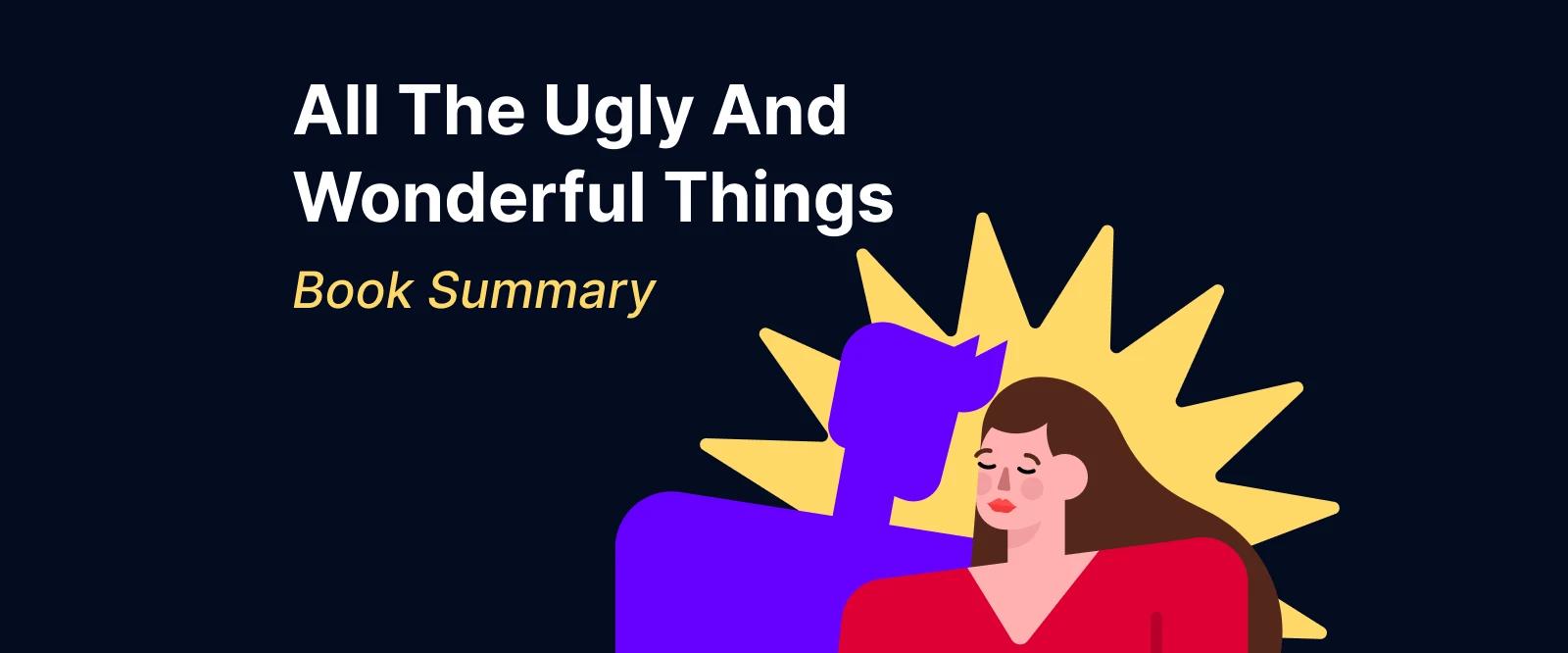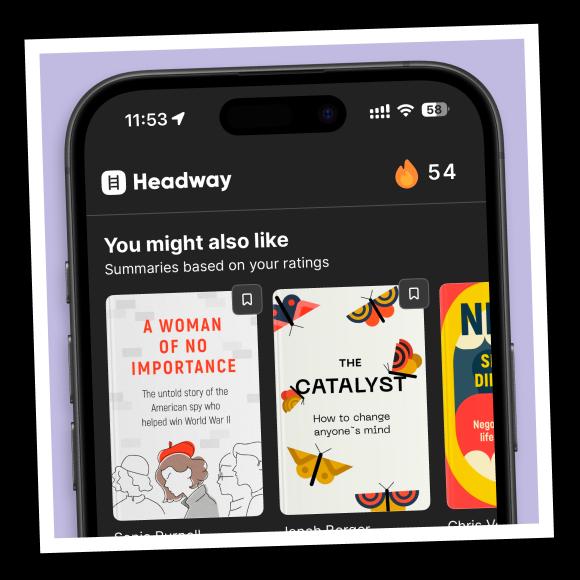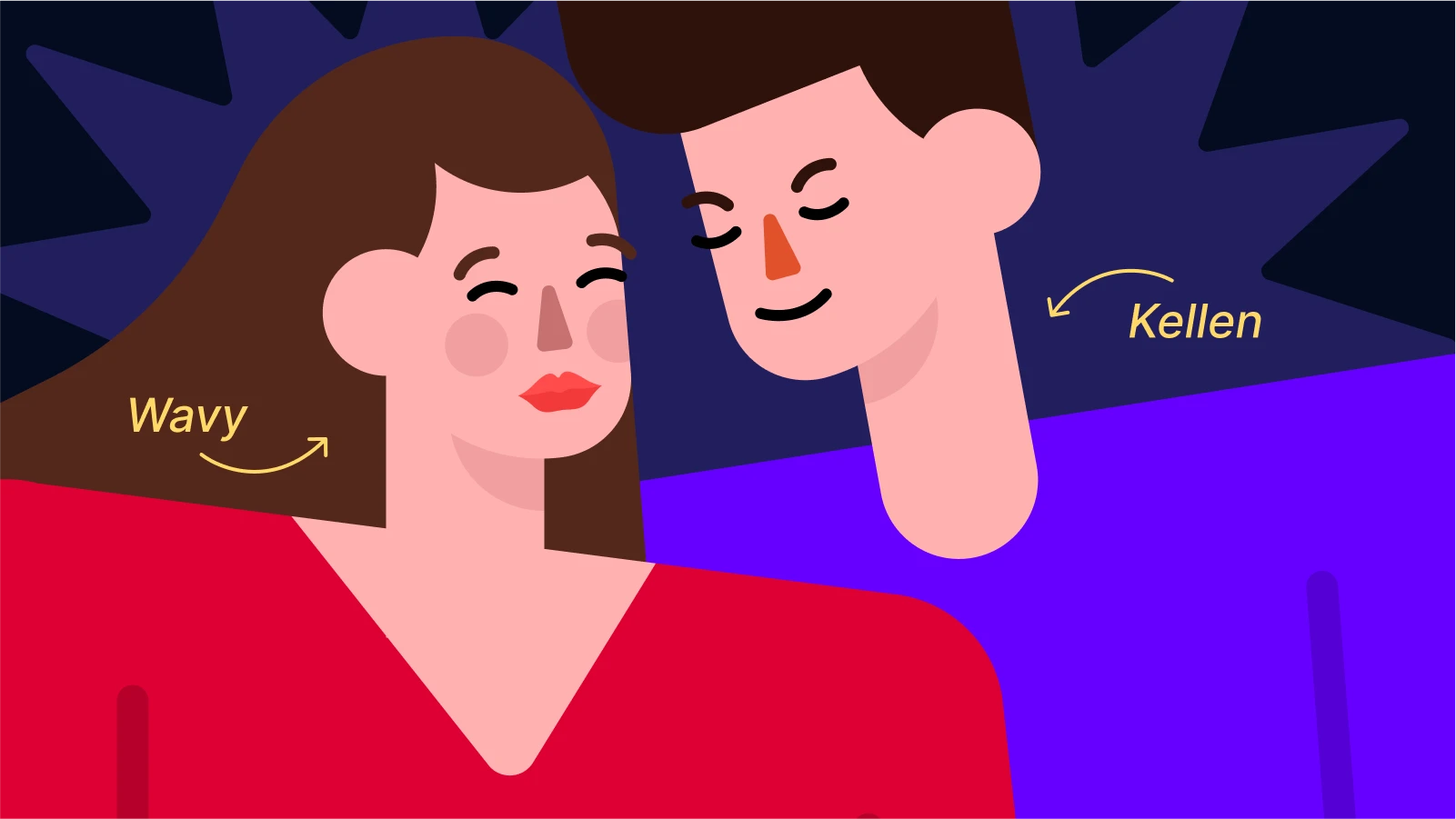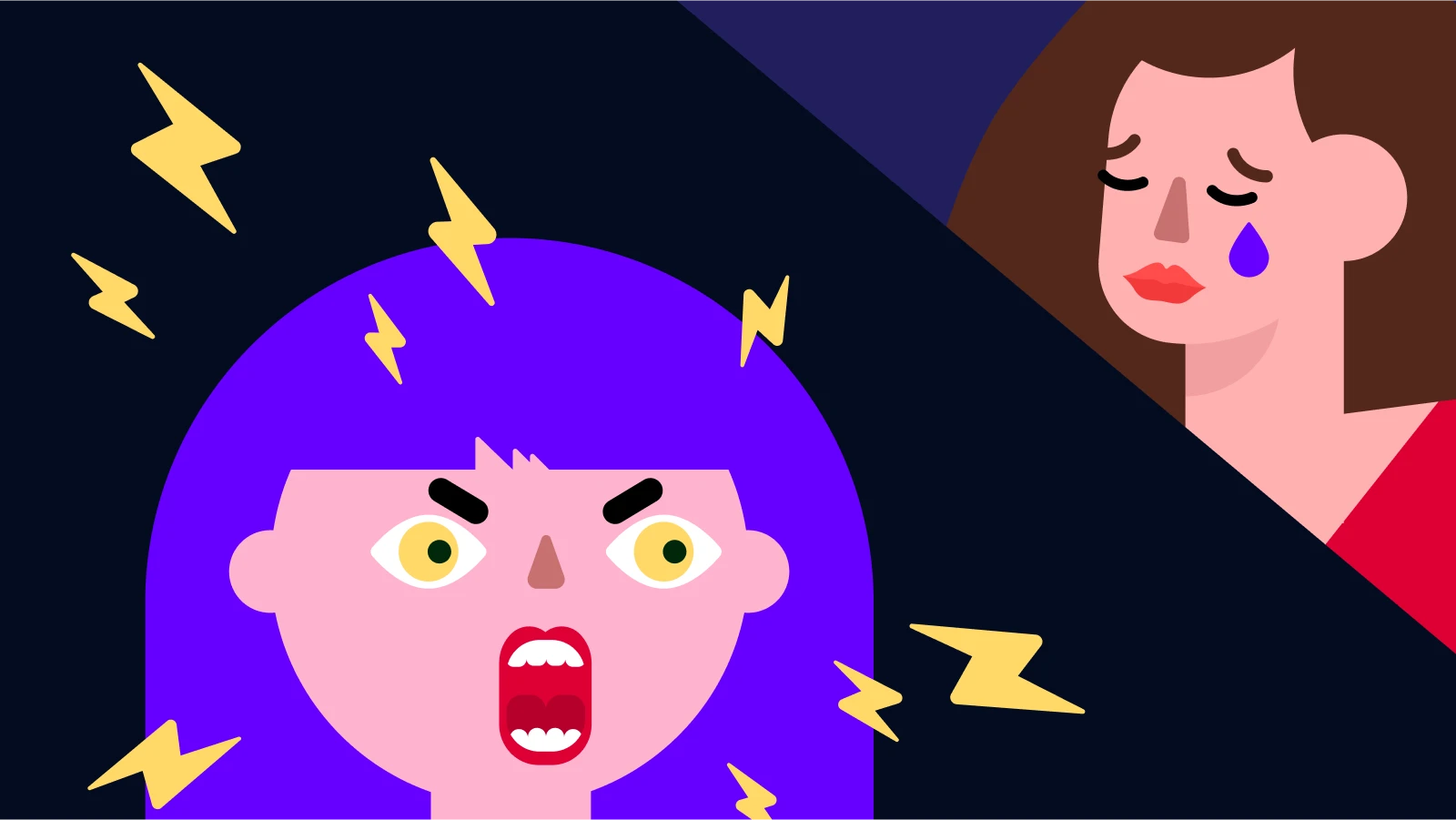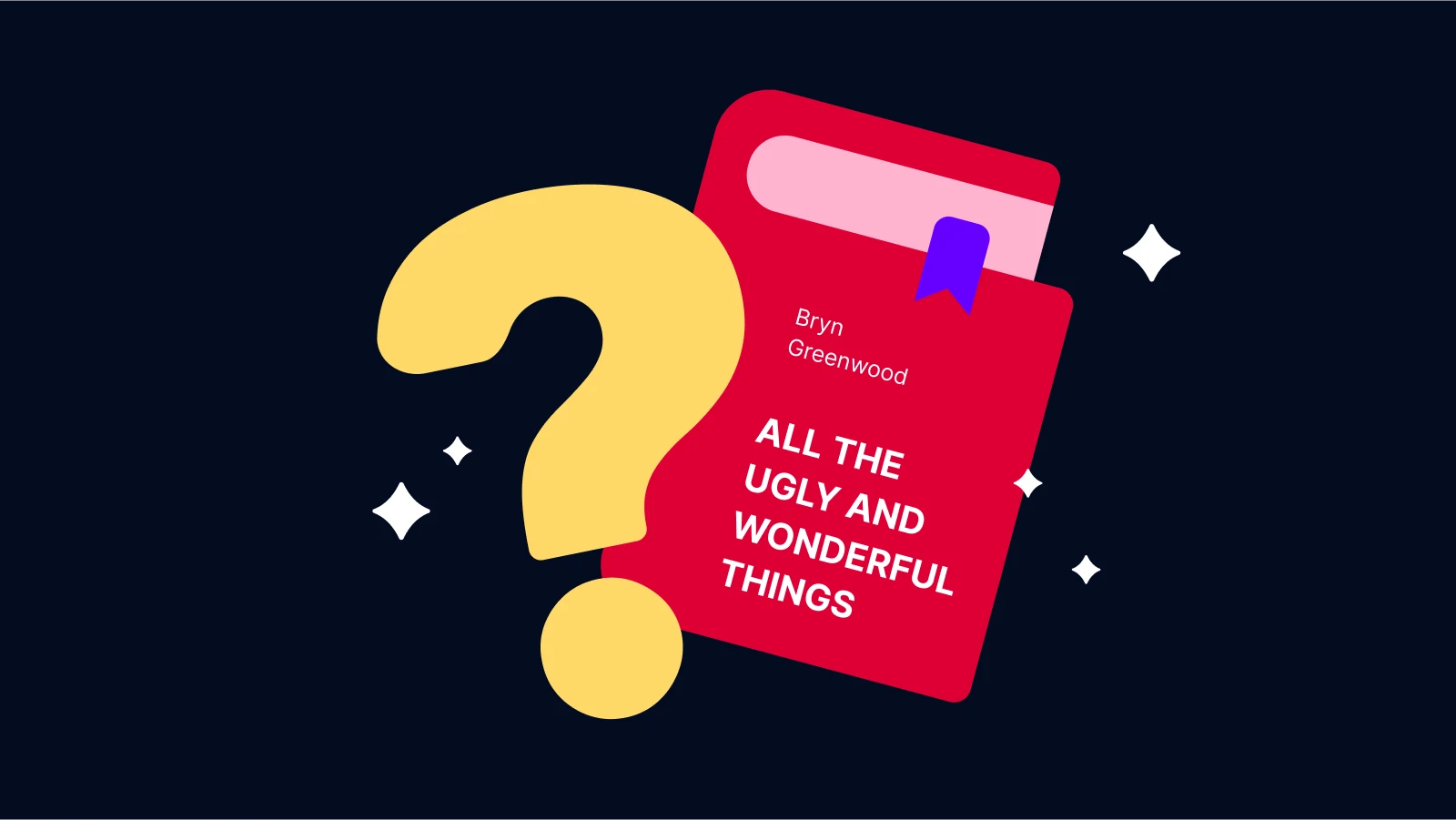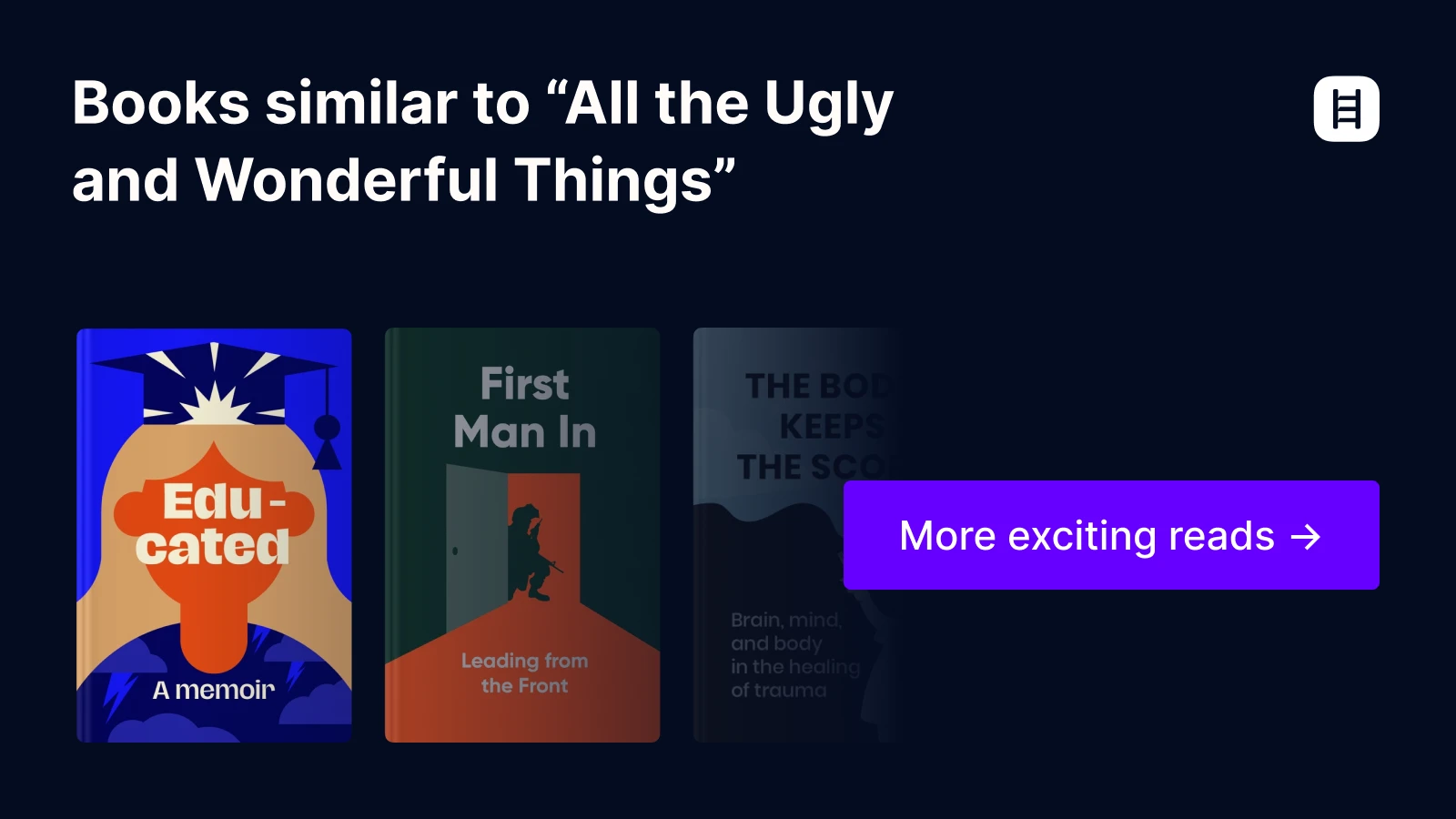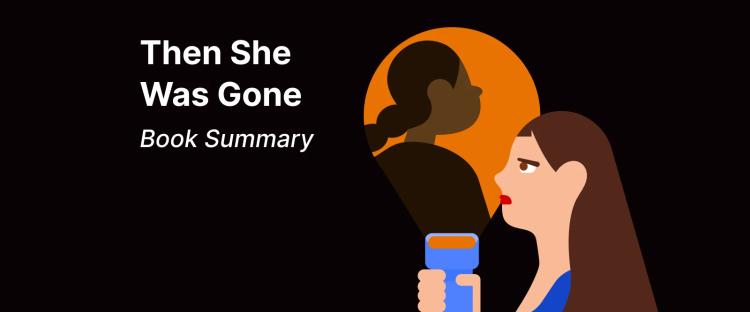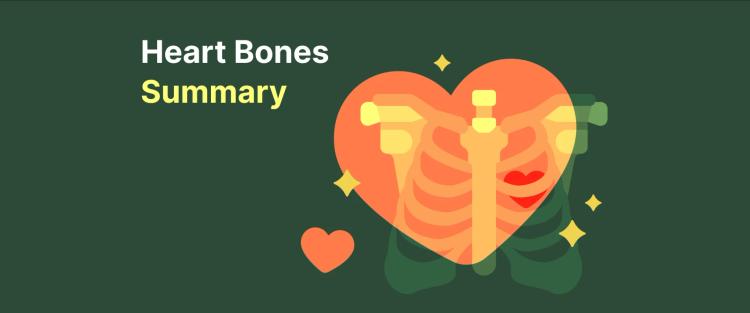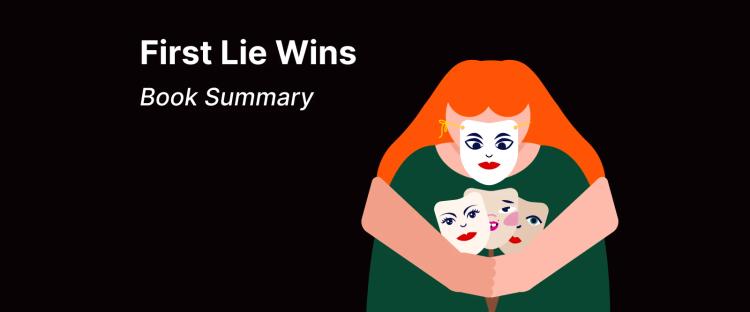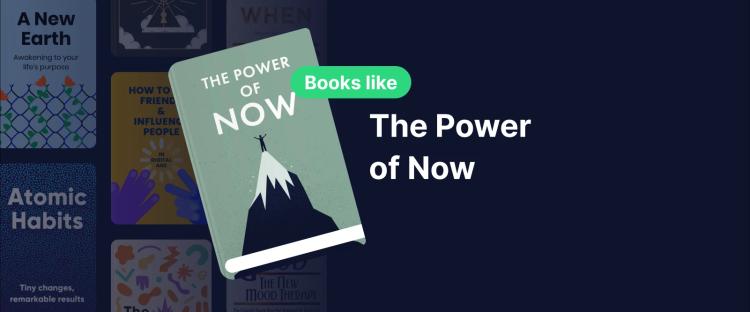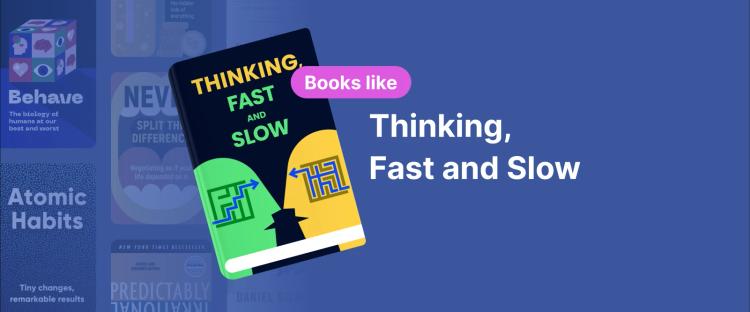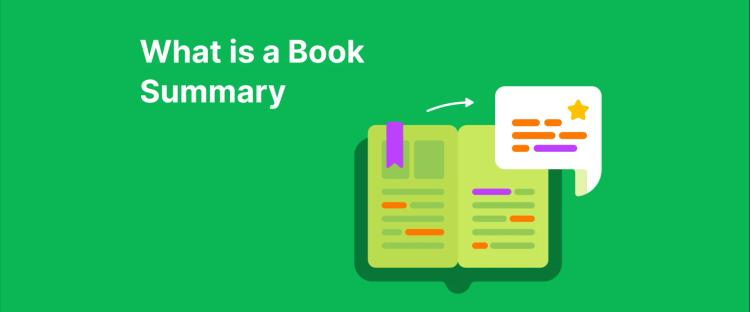'All the Ugly and Wonderful Things' is one of those novels that pushes several boundaries. This story is set in the rural Midwest, a world of meth labs and familial dysfunction.
It forces readers to face the truth about love and morality. Bryn Greenwood crafts a narrative that is both haunting and tender, daring readers to look beyond societal norms and into the raw complexity of human connection.
With this 'All the Ugly and Wonderful Things' summary, we'll present a synopsis and short book review to analyze the symbolism behind each character. We'll also explore the themes that make this story ideal for book club debates.
Whether you're looking to explore this provocative bestseller or simply curious about its controversial themes, Headway makes it easy to dive into the world's most talked-about books. With Headway, you can read or listen to comprehensive summaries of bestsellers at your convenience. It's perfect for busy people who want to stay connected to literature without sacrificing hours.
Download the Headway app today and see why millions of readers trust us to deliver the essence of must-read books in just 15 minutes.
Quick insights about 'All the Ugly and Wonderful Things'
The core story: A controversial love story between Wavy Quinn, a neglected young girl, and Kellen Barfoot, a man working for her drug-dealing father. The story spans from Wavy's childhood into adulthood.
Why it matters: This novel challenges conventional boundaries of morality and consent, sparking intense debate about trauma, survival, and the nature of love in broken circumstances.
The subject matter: Greenwood fearlessly tackles child neglect, drug addiction, and family dysfunction. She also explores an unconventional relationship between a minor and an adult, all told through multiple perspectives.
Critical reception: Despite (or perhaps because of) its controversial nature, the book became a bestseller and a Goodreads Choice Awards finalist. It also won the Best Books of 2016 prize from The St. Louis Post-Dispatch.
What makes it unique: The narrative doesn't offer easy answers or moral clarity. Instead, it presents complex characters shaped by trauma, forcing readers to question their own boundaries and biases about love, protection, and judgment.
What is 'All the Ugly and Wonderful Things' about?
'All the Ugly and Wonderful Things' is a provocative love story between Wavonna "Wavy" Quinn and Jesse Joe "Kellen" Barfoot. Wavy is a neglected and emotionally scarred young girl, while Kellen is a tattooed young man working for Wavy's meth-dealing father. They start off as friends, both feeling isolated from the world around them. Over time, that friendship evolves into a controversial romantic relationship, challenging love's conventional definition. Morality and consent are also elements questioned throughout the chapters.
Greenwood takes us on a decade-long journey, following Wavy from childhood into adulthood. In her search for stability, she navigates abuse and loss. The novel is told through multiple perspectives, offering a complete view of Wavy's world and the people in her life.
Plot summary
The story of 'All the Ugly and Wonderful Things' mixes moments of pain and tenderness that gradually form a larger picture. Let's walk through the synopsis, event by event:
Wavy's early life
Born in the backseat of a stranger's car.
Raised by Val, her mentally ill, drug-addicted mother, and Liam, her violent, meth-dealing father.
Subjected to emotional neglect and physical abuse.
Forced to develop obsessive behaviors (refuses to speak, avoids being touched, eats in secret).
Taught at a young age that her little brother must be taken care of, even if her parents are not role models.
Meeting Kellen
Eight-year-old Wavy witnesses Kellen crash his motorcycle near her home.
She helps him, sparking an unlikely friendship.
Kellen becomes a steady presence, completing tasks a parent should have.
Relationship development
Their bond deepens over shared trauma and loneliness.
Wavy's relationship with Kellen takes a turn when she begins to imitate adult behaviors she sees around her, including sexual gestures.
Kellen struggles with guilt and confusion as Wavy matures and expresses romantic interest.
Turning point
Wavy's parents are murdered in a drug-related incident.
Brenda, Wavy's aunt, walks in on Wavy and Kellen in a compromising situation.
Kellen is arrested and charged with statutory rape.
Wavy insists she consented and that they were engaged.
Her uncle claims her brother as his son, so the two are separated.
Resolution
Kellen served six years in prison.
Wavy goes to college, studies astrophysics, and petitions the court to lift the no-contact order.
They reunite, find Wavy's brother Donal, and begin building a life together.
The novel ends with a fragile but hopeful sense of peace and acceptance.
The main cast
In 'All the Ugly and Wonderful Things,' Bryn Greenwood has created characters connected by their broken souls. Each figure in Wavy's world is shaped by trauma, addiction, loyalty, and longing. There are no archetypes, no clear heroes or villains, only people trying to make sense of their circumstances, often failing, sometimes redeeming themselves in unexpected ways.
What makes Greenwood's character work so powerfully is her refusal to simplify. Instead, she invites readers to empathize with the morally ambiguous and to question their own assumptions about love and protection. Below, we explore the central characters who drive this emotionally charged narrative, each one a reflection of the novel's title: ugly, wonderful, and deeply human.
Wavonna "Wavy" Quinn: Wavy is the emotional nucleus of the novel, a brilliant, traumatized girl who learns to survive in a world that constantly fails her. From a young age, she exhibits behaviors shaped by neglect and abuse: She refuses to speak, avoids physical contact, and eats in secret. Yet beneath her silence is a fiercely intelligent mind and a deep yearning for connection. Her love of astronomy is a metaphor for her need to find order in chaos.
Jesse Joe "Kellen" Barfoot: Kellen's appearance contrasts with his heart of gold. He works for Wavy's father and is introduced as a man trying to stay out of trouble, since he's already had a conviction. His bond with her begins as a protective friendship, but gradually evolves into something more intimate. Kellen's internal turmoil starts once he feels drawn to Wavy's vulnerability and strength.
Greenwood never lets readers off the hook with Kellen; he's both a source of comfort and a moral dilemma. His loyalty, self-sacrifice, and eventual imprisonment make him one of the most polarizing characters in contemporary fiction.
Val Quinn: Val is Wavy's mother, a volatile, mentally ill woman addicted to meth and emotionally incapable of parenting. Her presence is toxic, and her behaviour varies between obsessive affection and outbursts of violence. Val's neglect leaves Wavy to fend for herself, and her inability to protect her daughter sets the stage for much of the novel's conflict. Val's behavior shows how untreated mental illness and addiction can devastate families.
Liam Quinn: Wavy's father is your classical narcissist and criminal. As a drug dealer, he is manipulative and violent, using his children as pawns and his employees as disposable tools. His brutal death does not stop his legacy from haunting Wavy long after he's gone. Liam represents the generational trauma that she must overcome to reclaim her life.
Brenda: Brenda is Wavy's aunt and one of the few adults who actually tries to help her. She tries her best to understand her niece's choices, but her well-meaning attempts often backfire. When she discovers Wavy and Kellen's relationship, she faces an impossible decision. Her decision to call the authorities makes moral sense on paper, but it shatters Wavy's world. The author includes Brenda's point of view to show the tension between protecting someone and controlling them, between love and judgment.
Donal Quinn: Wavy's younger brother, Donal, is another casualty of their toxic upbringing. His early years are marked by neglect. He is eventually separated from Wavy and placed with his uncle, and later in foster care. Their reunion is a reminder that what was once lost might still be salvaged. Donal's innocence and resilience offer hope in an otherwise bleak landscape.
Amy & Leo: Her cousin and friend represent the "normal" world that Wavy tries to be part of. Their presence highlights her social isolation and how difficult it is to bounce back after trauma. They're not central to the plot, but they serve as mirrors, showing how far Wavy has come and how far she still has to go.
Each character is a study in contradiction, capable of both cruelty and compassion, love and harm.
Key themes and symbolism
Bryn Greenwood's All the Ugly and Wonderful Things is more than a controversial love story. It becomes a meditation on survival and identity by blurring the lines between right and wrong. Greenwood's storyline is filled with emotional depth. The abundance of themes and symbols invites readers to look beyond the surface of the plot and to analyze the psychological aspects of her characters.
Trauma and survival
Wavy's life is shaped by trauma. Her compulsive behaviors (refusing to speak, avoiding touch, eating in secret) become survival strategies. Greenwood doesn't romanticize trauma, showing how it distorts perception, reshapes relationships, and forces children to grow up too fast.
Wavy's resilience is not loud or heroic, but quiet, calculated, and internal. Her trauma doesn't define her. Instead, it influences every decision she makes. This includes her attachment to Kellen, who becomes her emotional anchor.
Love vs. morality
The central relationship between Wavy and Kellen is a web of right and wrong. Greenwood dares readers to separate emotional truth from legal and ethical boundaries. Is love inherently good if it arises from care and protection? Or do age difference, power dynamics, and trauma make it inherently problematic?
The book doesn't offer easy answers. Instead, it presents a relationship that feels emotionally authentic but morally troubling, leaving readers to wrestle with their own real-life boundaries and biases.
Constellations and astronomy
Wavy's fascination with stars and constellations is one of the novel's most powerful symbols. The night sky represents a permanent presence that her life lacks. Astronomy becomes a language of connection, especially with Kellen, who learns about the stars to bond with her.
Symbolically, constellations reflect Wavy's desire to find patterns in chaos and to believe that something vast and beautiful exists beyond her pain.
Family and belonging
Greenwood redefines family not as a biological construct but as a chosen one. Wavy's parents are toxic and destructive, yet she finds kinship in unexpected places, with Kellen, with her brother Donal, and even with her aunt Brenda, despite their conflicts.
This theme is especially powerful in the way Wavy fights for Donal's safety and later seeks to rebuild a life with Kellen. Her version of family is unconventional, but it's rooted in loyalty and emotional truth.
Judgment and empathy
By using multiple narrators, the author invites readers to see the same events through different lenses. This type of storytelling creates empathy, even for characters whose actions are morally questionable. It also highlights how judgment is often shaped by limited understanding.
There is a fine line between empathy and endorsement, one which Greenwood masterfully navigates. She doesn't ask readers to approve of Wavy and Kellen's relationship. Instead, she asks them to understand how it came to be.
Why is 'All the Ugly and Wonderful Things' controversial?
It's rare for a literary fiction novel to be both a bestseller and a source for moral debate. A finalist for the Goodreads Choice Awards, the story received the Best Books of 2016 prize from The St. Louis Post-Dispatch. This aspect adds credibility to Greenwood's work, especially considering how controversial and emotionally complex the story is.
Whether browsing Amazon reviews, listening to the audiobook, or diving into Goodreads discussions, readers have been captivated. The portrayal of a romantic relationship between a young girl and an adult man sparks intense reactions. Some readers hail it as a brave exploration of love in the margins; others condemn it as morally indefensible, arguing it normalizes inappropriate relationships between adults and children.
Let's look at the key reasons this novel continues to be thought-provoking.
Age gap and consent
Wavy is a 13-year-old girl when her relationship with Kellen becomes sexual. So the legal and ethical implications are undeniable. Greenwood forces readers to face the uncomfortable reality that children can form attachments that feel like love, even when they lack the maturity to understand them.
Interesting to mention is that the state of Kansas did not have a minimum age for marriage if parental or judicial consent was given. This element is touched upon in the story.
Reader's moral conflict
Many readers experience cognitive dissonance. Kellen is portrayed as kind and protective, not predatory, yet the relationship with a little girl is illegal. Greenwood's nuanced portrayal makes it difficult to categorize him as either hero or villain. This ambiguity is the novel's emotional engine.
Author's intent
The author has stated that she drew from personal experience, having grown up in a family involved in drug dealing. Mind the fact that her intention was never to create a romantic story around abuse. Instead, she invites readers to explore the gray areas of connection.
Similar books you might like
If you're drawn to emotionally complex, morally challenging stories, explore these 15-minute Headway summaries:
'Educated' by Tara Westover: A memoir of resilience and self-discovery in the face of familial abuse and isolation.
'First Man In' by Anthony Middleton: A former Special Forces soldier shares lessons from his military service.
'The Body Keeps the Score' by Bessel van der Kolk: A scientific and emotional exploration of how trauma reshapes the brain and body.
Learn life lessons with Headway
Greenwood's coming-of-age novel forces readers to confront their moral boundaries. It's a story that keeps you thinking long after you finish reading, because of the uncomfortable topics it approaches with honesty.
Whether you find yourself sympathizing with Wavy and Kellen or questioning their relationship entirely, this book refuses to give you easy answers. Real life is messy, and Greenwood captures that messiness without trying to clean it up or make it palatable.
Reading books like this does something important — it makes you think harder about your own assumptions. You might discover beliefs you didn't know you held. Or find yourself defending positions you never considered before. That's the sign of powerful storytelling.
Want to explore more books that make you think differently? Headway, your self-growth companion, gives you access to impactful literature in bite-sized formats. You can dive into complex stories and controversial topics through 15-minute summaries that fit your busy schedule.
Whether you're curious about memoirs of survival, psychological thrillers, or other thought-provoking fiction, Headway helps you discover books that matter. You'll find stories that challenge your thinking and help you understand different perspectives — all without spending hours reading full novels.
Download Headway and discover your next meaningful read. Sometimes, the books that make us most uncomfortable teach us the most about ourselves.
Frequently asked questions about the 'All the Ugly and Wonderful Things' summary
How many pages are in 'All the Ugly and Wonderful Things'?
'All the Ugly and Wonderful Things' is 346 pages long, and the hardcover edition measures 25 cm in height according to library cataloging information. Despite this length, Greenwood uses each word to develop each character's viewpoint fully throughout the narrative.
How old was Wavy when she met Kellen?
We don't want to give away spoilers, but if you're curious, Wavy was 8 years old when she first met Kellen. She witnesses his motorcycle accident near her home. This age difference — between an 8-year-old child and a 24-year-old adult — is central to the book's controversy.
Is 'All the Ugly and Wonderful Things' based on a true story?
While not autobiographical, Greenwood has acknowledged drawing from her own experiences growing up in a family involved in drug dealing. These real-life encounters with that world likely boosted the novel's gritty authenticity, helping her create believable characters in similar situations.
Who is Amy in 'All the Ugly and Wonderful Things'?
Amy is Wavy's cousin, and she narrates much of Wavy's story from her perspective. She comes from a more secure suburban world compared to Wavy's chaotic life. Amy is fascinated by Wavy and often finds her life boring compared to her cousin's dramatic experiences.
Does 'All the Ugly and Wonderful Things' have a happy ending?
The ending offers a sense of hard-won peace and reconciliation, though it's far from traditional. Wavy and Kellen reunite and begin building a life together after years of separation. This ending offers hope, rather than a neat closure, leaving readers to interpret what happens next.
What awards has Bryn Greenwood's book 'All the Ugly and Wonderful Things' won or been recognized with?
The book achieved second place in the Goodreads Choice Awards for Best Fiction in 2016 with approximately 28,000 reader votes. It was declared the first-ever Book of the Year by Book of the Month Club in December 2017. The novel also reached #9 on the New York Times Ebook Bestseller List in January 2017.
Which well-known publishers printed 'All the Ugly and Wonderful Things'?
Press published the original hardcover edition, while Thomas Dunne Books, an imprint of St. Martin's Griffin, handled the paperback edition. Despite its contentious subject matter, the novel was able to gain widespread distribution through the backing of these recognized publishing houses.

